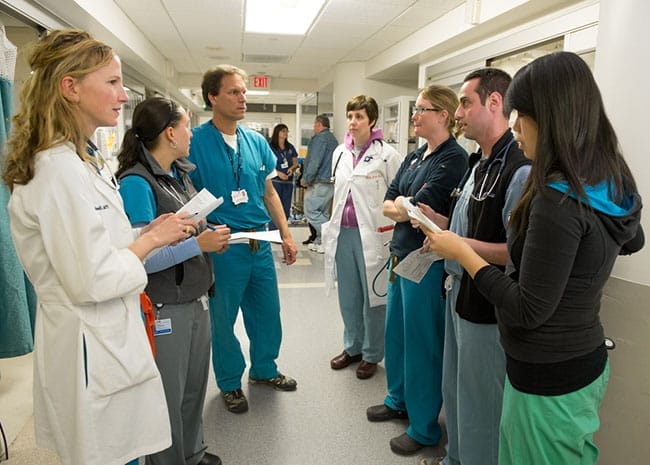A recent review of academic medical centers (AMC) by the Association of American Medical Colleges (AAMC) concluded:
“Academic Medical Centers are not at the scale of operations they need to be at, in order to be successful. This scale requires an order of magnitude several time larger (e.g., economies of scale) in order to drive down costs (based on reduced reimbursements). This scale can occur through partnerships, affiliations and acquisitions. Based on this, ‘mega systems’ will emerge to handle the continuity of care.”
This review focused on what AMCs will be required to do in order to thrive, which is that they will have to deliver complex services to high-risk populations, train workforces, provide leadership in clinical practice and quality, perform biomedical and clinical research, foster interdisciplinary perspectives, catalyze attention to population health, maintain ties to global issues, develop instruments and tools for evaluation, and provide accessibility and data management.
What a tall order.
These requirements will likely force AMCs to significantly modify their cultures and how they do business. The biggest issue facing AMCs is how to get disparate clinical fiefdoms to work together in an interdisciplinary way to provide good health. Notice that I’ve not used the term “health care” in this case. “Health care” is omitted because, as mentioned above, these academic medical centers will need to work with the community on health in the broader sense of improving people’s health and preventing people from getting sick and ending up at an AMC. This represents a tectonic shift in how academic medical centers operate. By preventing sickness, this may mean that these centers will need to move health (and health care) into the community and into less costly care settings. This, in turn, may require them to decapitalize and shrink their facilities.
Some medical centers are doing exactly this. One example is the University of California Los Angeles Reagan Medical Center, which has shuttered facilities and moved health care and health into the community.
Other institutions are taking a different approach. The University of Pennsylvania is focused on building biomedical research facilities and developing relationships with industry, venture capital and private equity financing partners in order to grow Penn Med. Other AMCs, such as Partners in Boston, have been attempting acquisitions as of late.
Partners, for example, attempted to merge with three hospitals and a large physician practice. A state judge in January rejected a deal Partners struck with the state’s previous attorney general, Martha Coakley, to allow the acquisition of South Shore Hospital to go forward, and Partners backed off after Coakley’s successor, Maura Healey, threatened to sue to kill the deal.
It is going to be interesting to see if the massive economies of scale necessary to keep costs in check will ever be reached. Outside forces such as reimbursement, the focus on health versus health care, and the capital and labor intensive nature of AMCs may all work against them ever achieving mega status. Lastly, academic medical centers may risk further diluting their brand as they reach deeper into the community.
How will senior executives at these AMCs handle navigating these and other issues? Let me know your thoughts below in the comments.


























